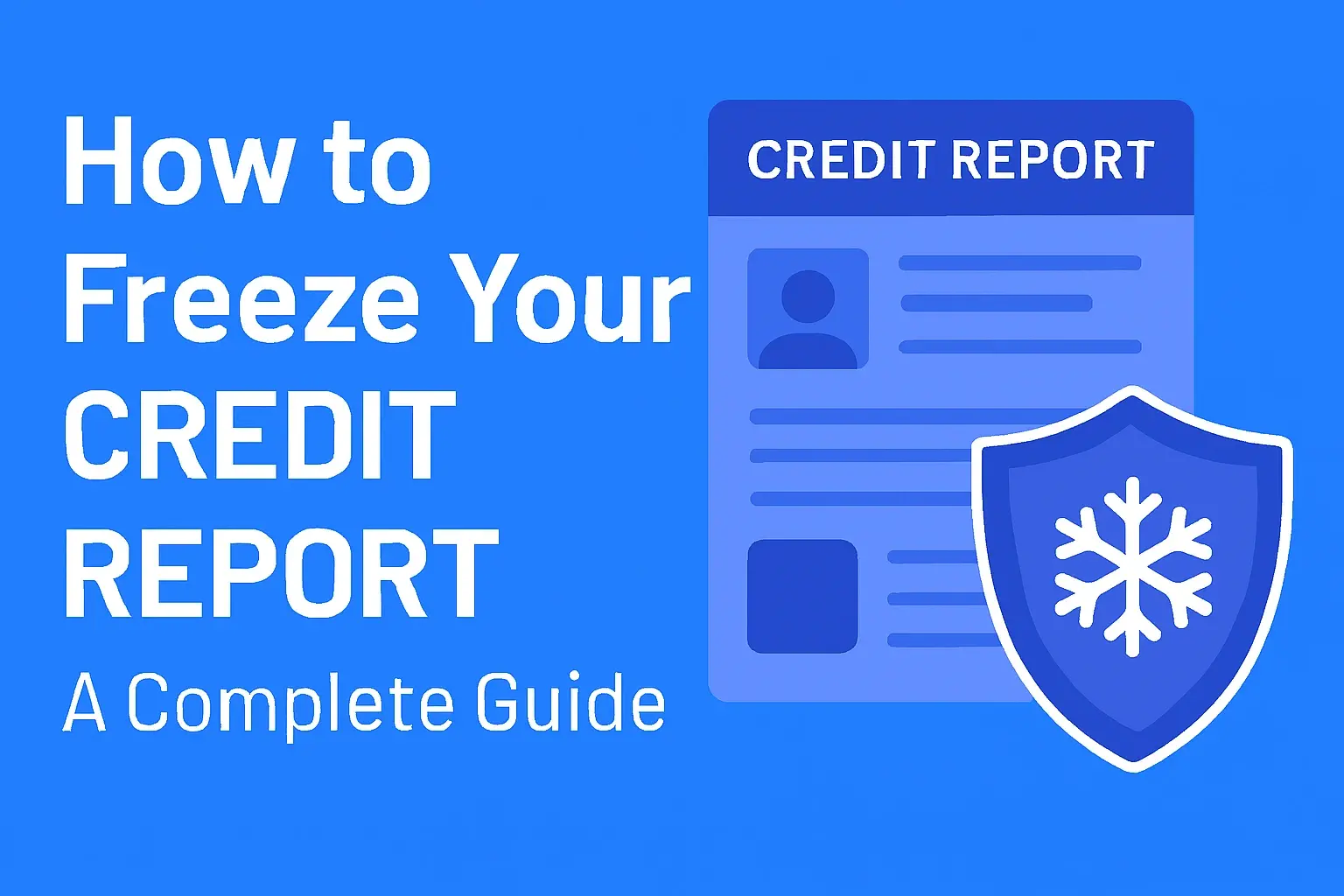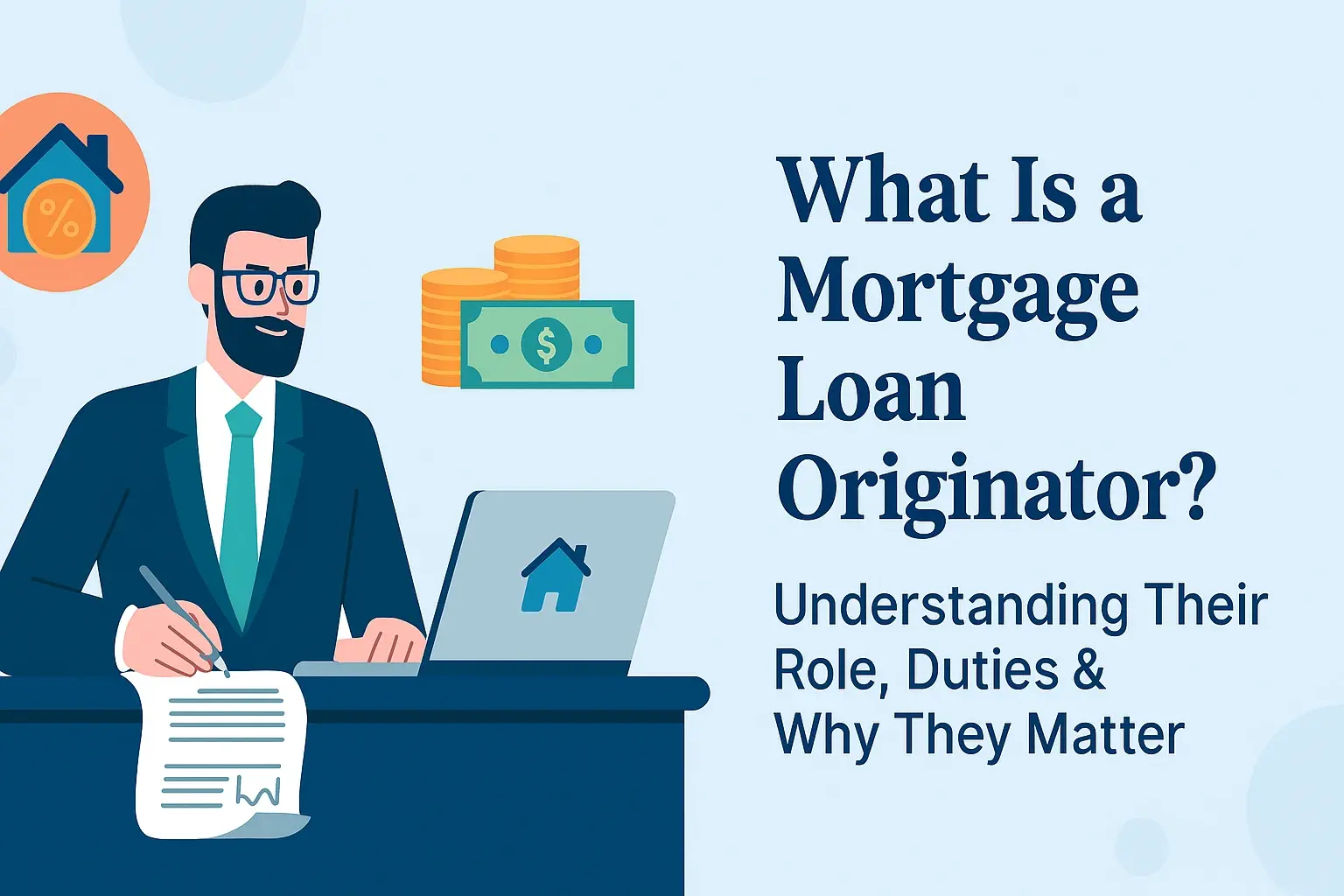-
Posted on: 29 Jul 2024

-
Clearing your credit default history is a crucial step towards financial recovery. This comprehensive guide will detail actionable strategies, legal avenues, and practical tips for removing defaults from your credit report, empowering you to rebuild a stronger financial future. We'll cover everything from understanding defaults to disputing inaccuracies and leveraging time.
Understanding Credit Defaults
A credit default occurs when a borrower fails to make payments on a debt as agreed upon in the loan or credit agreement. This is a serious financial event that significantly impacts your creditworthiness. Lenders report these missed payments to credit bureaus, which then record them on your credit report. The presence of a default can make it challenging to obtain new credit, secure loans, rent an apartment, or even get certain jobs. Understanding what constitutes a default and how it's recorded is the first step in addressing it.
What is a Credit Default?
At its core, a credit default signifies a breach of contract between a borrower and a lender. When you take out a loan or open a credit card, you enter into a legal agreement to repay the borrowed amount, plus interest, according to a predetermined schedule. Missing payments, especially multiple consecutive ones, triggers a default status. The severity and reporting of a default can vary depending on the type of credit and the lender's policies, but it invariably leads to negative consequences for your credit score.
The Role of Credit Bureaus
Credit bureaus, such as Equifax, Experian, and TransUnion, are central to the credit reporting system. They collect vast amounts of data on consumers' borrowing and repayment habits from lenders and other creditors. This information is compiled into credit reports, which are then used to generate credit scores. When a default occurs, lenders report it to these bureaus, where it becomes a permanent part of your credit history until it is legally removed or expires naturally. The accuracy of this information is paramount, as errors can lead to unfair financial repercussions.
Types of Credit Defaults
Credit defaults can manifest in various forms, each with its own implications. Recognizing the specific type of default on your report is crucial for formulating the right strategy to address it. Different types of defaults may have different reporting periods and may be handled differently by creditors and credit bureaus.
Loan Defaults
Loan defaults are common and can occur with various types of loans, including mortgages, auto loans, personal loans, and student loans. A mortgage default, for instance, is a failure to make mortgage payments, which can ultimately lead to foreclosure. An auto loan default can result in the repossession of your vehicle. Student loan defaults can have severe consequences, including wage garnishment and loss of professional licenses, especially for federal student loans.
Credit Card Defaults
Credit card defaults typically happen when a cardholder stops making payments on their credit card balance. This can be due to financial hardship, overspending, or other reasons. Once a credit card account becomes significantly delinquent, it is often charged off by the lender, meaning the lender considers the debt unlikely to be collected. This charge-off status is then reported to the credit bureaus, severely damaging your credit score.
Other Forms of Default
Beyond traditional loans and credit cards, defaults can occur in other financial agreements. This might include failing to pay rent on time (which can sometimes be reported), defaulting on a lease agreement for a car or equipment, or failing to meet payment obligations for services like utilities if they are sent to collections. While not all these may directly appear as a "default" on a credit report in the same way as a loan, if they are sent to a collection agency, the collection account will negatively impact your credit.
How Defaults Impact Your Credit
The impact of a credit default on your credit score and overall financial health is profound and long-lasting. Understanding the extent of this damage is essential for motivating yourself to take corrective action.
Credit Score Reduction
Payment history is the most significant factor in calculating your credit score, accounting for approximately 35% of the FICO score. A default is a severe negative mark on your payment history, leading to a substantial drop in your credit score. The exact reduction depends on your score before the default, the severity of the default (e.g., 30, 60, 90+ days late), and how many other negative items are on your report. Scores can plummet by tens or even hundreds of points.
Difficulty Obtaining New Credit
Lenders use credit reports and scores to assess the risk of lending money. A default signals to lenders that you are a high-risk borrower. Consequently, you may be denied applications for new credit cards, loans, or mortgages. If you are approved, you will likely face higher interest rates, lower credit limits, and stricter terms, making borrowing more expensive and difficult.
Other Financial Repercussions
The impact extends beyond just borrowing. Landlords often check credit reports before approving rental applications. Employers, particularly for positions involving financial responsibility, may also review credit histories. A default can also affect your ability to obtain insurance at favorable rates or even to get certain types of utility services without a substantial security deposit. In essence, a default can create a domino effect of financial challenges.
The Legal Framework for Credit Reporting
The credit reporting industry is heavily regulated to protect consumers from unfair or inaccurate reporting. Understanding these regulations is key to asserting your rights and challenging incorrect information on your credit report.
The Fair Credit Reporting Act (FCRA)
The FCRA is the primary federal law governing credit reporting in the United States. It dictates how credit bureaus and the users of credit information must operate. The FCRA grants consumers specific rights, including the right to access their credit reports, dispute inaccuracies, and have fraudulent information investigated. It also sets standards for the accuracy, fairness, and privacy of credit information. Understanding the FCRA is your most powerful tool when dealing with credit reporting issues.
Other Relevant Laws
While the FCRA is the cornerstone, other laws also play a role. The Fair Debt Collection Practices Act (FDCPA) governs the conduct of third-party debt collectors. If your defaulted debt has been sent to collections, the FDCPA provides protections against harassment and abusive practices. Additionally, state laws may offer further protections or have different statutes of limitations for debt collection. Familiarizing yourself with these laws can equip you to handle situations involving debt collectors more effectively.
Your Rights Under the FCRA
The FCRA empowers you with several critical rights when it comes to your credit report. Knowing these rights is the first step to exercising them effectively.
Right to Access Your Credit Reports
You are entitled to a free copy of your credit report from each of the three major credit bureaus (Equifax, Experian, and TransUnion) once every 12 months. You can obtain these reports through AnnualCreditReport.com. This is the most crucial step in identifying any defaults or inaccuracies that need to be addressed. It's advisable to check your reports regularly, not just annually, especially if you suspect an issue.
Right to Dispute Inaccurate Information
If you find any information on your credit report that you believe is inaccurate, incomplete, or misleading, you have the right to dispute it. This includes defaults that you believe were reported in error, are no longer valid, or have been paid but not updated. The credit bureaus are legally obligated to investigate your dispute within a reasonable period, typically 30 days, and to correct any verified inaccuracies.
Right to Have Information Removed
Negative information, including defaults, generally stays on your credit report for seven years, with some exceptions like bankruptcies which can remain for up to 10 years. However, the FCRA requires that inaccurate, incomplete, or unverifiable information be removed. If a dispute reveals an error, the erroneous information must be removed. Furthermore, once the reporting period expires, the information must be removed by the credit bureaus.
How to Check Your Credit Report
Regularly reviewing your credit report is essential for monitoring your financial health and catching any errors or fraudulent activity. Here’s how to do it effectively.
Using AnnualCreditReport.com
The official website for obtaining your free credit reports is AnnualCreditReport.com. Due to the COVID-19 pandemic and its economic impact, all three major credit bureaus are offering free weekly online credit reports through AnnualCreditReport.com until December 31, 2023. After this date, the standard is once every 12 months. Visit the site, verify your identity, and request your reports from Equifax, Experian, and TransUnion. It's best to stagger your requests throughout the year to monitor your credit more frequently.
What to Look For
When reviewing your credit reports, pay close attention to the following:
- Personal Information: Ensure your name, address, Social Security number, and employment history are accurate. Any discrepancies could indicate identity theft.
- Account Information: Check all listed credit accounts (loans, credit cards, etc.). Verify the creditor name, account numbers, dates opened, credit limits, and balances.
- Payment History: This is critical. Look for any late payments, missed payments, defaults, charge-offs, collections, or bankruptcies. Note the dates and severity of any negative marks.
- Public Records: Review any public records listed, such as bankruptcies, liens, or judgments.
- Inquiries: Check for any hard inquiries that you don't recognize. These occur when you apply for credit.
If you find any errors, such as a default that you paid off or never incurred, you must initiate a dispute.
Strategies for Clearing Credit Defaults
Clearing a credit default from your report requires a strategic approach. The best method often depends on whether the default is accurate, how old it is, and your current financial situation. Here are the primary strategies.
1. Dispute Inaccuracies
If the default on your credit report is incorrect, this is your strongest and most direct path to removal. This could be due to identity theft, a clerical error by the lender or credit bureau, or the debt belonging to someone else.
2. Negotiate with Creditors/Collection Agencies
If the default is accurate, you may be able to negotiate with the original creditor or the collection agency holding the debt. This often involves paying a portion of the debt or settling it in full.
3. Wait for it to Age Off
All negative information, including defaults, has a limited lifespan on your credit report. After a certain period, it will automatically be removed. Understanding these timeframes is crucial.
4. Legal Avenues
In some rare cases, legal intervention might be necessary, especially if there are violations of consumer protection laws.
Comparing Strategies
The most effective strategy depends on your specific circumstances. Here's a comparison:
Strategy When it's Best Potential Outcome Effort Required Disputing Inaccuracies The default is factually incorrect (e.g., paid, never incurred, wrong person). Complete removal of the inaccurate default. Moderate (requires documentation and communication). Negotiating with Creditors The default is accurate, and you want to resolve the debt. Debt resolution, potential for removal or update on report. Moderate to High (requires negotiation skills and financial resources). Waiting for it to Age Off The default is accurate, and you cannot negotiate a favorable outcome, and it's nearing its reporting limit. Automatic removal after the statutory period. Low (requires patience). Disputing Inaccurate Defaults
This is often the most straightforward and effective method if the information on your credit report is genuinely wrong. The FCRA mandates that credit bureaus investigate disputes.
Gathering Evidence
Before you dispute, collect all relevant documentation. This might include:
- Proof of payment (cancelled checks, bank statements, online payment confirmations) for the debt in question.
- Correspondence from the original creditor or collection agency that contradicts the information on your report.
- Identity theft protection documents if you suspect fraud.
- Any other documents that prove the default is inaccurate or should not be on your report.
Contacting the Credit Bureaus
You can dispute directly with each credit bureau (Equifax, Experian, TransUnion). The most effective way is usually in writing, via certified mail with a return receipt requested. This creates a paper trail.
Your dispute letter should clearly state:
- Your personal information (name, address, account number).
- The specific item you are disputing (the defaulted account, its account number, and the creditor's name).
- Why you believe the information is inaccurate.
- What action you want taken (e.g., removal of the item).
- Attach copies (never originals) of your supporting evidence.
The Investigation Process
Once the credit bureau receives your dispute, they have 30 days (sometimes 45 days if you send additional information later) to investigate. They will contact the furnisher of the information (the original creditor or collection agency) to verify its accuracy. If the furnisher cannot verify the information within this timeframe, or if it's found to be inaccurate, it must be removed or corrected. You will receive a written response from the credit bureau detailing the outcome of their investigation.
The Dispute Process: Step-by-Step
Follow these steps to effectively dispute an inaccurate default on your credit report.
- Obtain Your Credit Reports: Get free copies from AnnualCreditReport.com.
- Identify the Inaccuracy: Carefully review each report for the defaulted account. Note the creditor name, account number, date of the default, and any balance reported.
- Gather Supporting Documents: Collect evidence that proves the inaccuracy (e.g., payment records, court documents, letters).
- Write Your Dispute Letter: Draft a clear, concise letter for each credit bureau reporting the inaccuracy. Include all necessary details and attach copies of your evidence.
- Send via Certified Mail: Mail your letters using certified mail with a return receipt. Keep copies of everything for your records.
- Wait for Investigation: The credit bureaus have 30-45 days to investigate.
- Review the Results: You will receive a response. If the item is removed or corrected, check your updated credit report.
- Escalate if Necessary: If the investigation is unsatisfactory or the inaccuracy persists, consider filing a complaint with the Consumer Financial Protection Bureau (CFPB) or consulting a consumer protection attorney.
Negotiating with Creditors
If the default is accurate, direct negotiation with the original creditor or the collection agency is often your next best step. The goal is to resolve the debt in a way that may lead to its removal or a less damaging reporting on your credit file.
When to Negotiate
Negotiation is most effective when the debt is still with the original creditor or has recently been sold to a collection agency. The older the debt, the less leverage you might have, but it's still worth exploring. If the debt is past the statute of limitations for lawsuits, you may have more negotiating power, as they cannot sue you for it.
Negotiation Tactics
- Be Polite but Firm: Approach the negotiation professionally. State your situation clearly and your desire to resolve the debt.
- Offer a Lump Sum Settlement: Often, creditors or collectors will accept a lump sum payment that is less than the full amount owed. This is known as a settlement. A common starting point is to offer 30-50% of the outstanding balance, but be prepared to increase your offer.
- Request a "Pay for Delete" Agreement: This is the holy grail. A "pay for delete" agreement is where the creditor or collection agency agrees to remove the negative entry from your credit report entirely in exchange for payment. These are difficult to obtain, especially from original creditors, but are more common with third-party collection agencies.
- Get Everything in Writing: Never agree to a payment or settlement over the phone without receiving a written agreement first. Ensure the agreement clearly states what the payment covers and any promises made regarding credit reporting (especially if it's a pay-for-delete).
Settlement Agreements
A settlement agreement is a contract where you agree to pay a reduced amount of the debt in exchange for the creditor releasing you from further obligation for the full amount. This is a common way to resolve defaulted debts.
How Settlements Work
When you settle a debt, the creditor reports the account as "settled for less than full balance" or "paid in full after settlement" on your credit report. While this is better than an unpaid default or charge-off, it still remains a negative mark. The settlement itself will also be visible on your credit report for the standard seven-year period from the date of the original delinquency.
Impact on Your Credit Score
Settling a debt is generally better than not paying it at all, as it shows you took responsibility. However, the notation of "settled for less than full balance" can still negatively impact your credit score. The key benefit is that it stops further collection activity and prevents potential lawsuits. It's crucial to understand that a settlement does not erase the history of the default, but rather updates its status.
Pay-for-Delete Agreements
A "pay for delete" agreement is a negotiation tactic where a debt collector agrees to remove the negative item from your credit report in exchange for payment. This is highly desirable because it can lead to the complete removal of the default entry, which is far more beneficial than simply updating its status to "paid" or "settled."
Challenges and How to Approach Them
Original creditors rarely agree to pay-for-delete arrangements. It is more commonly achieved with third-party collection agencies, who may be more willing to remove an account to secure a payment, especially if the debt is old or difficult to collect. Here’s how to increase your chances:
- Be Patient: Don't rush into paying. First, verify the debt and ensure it's valid.
- Negotiate Carefully: When you offer a settlement, explicitly ask if they would be willing to remove the account from your credit report in exchange for payment.
- Get it in Writing: This is non-negotiable. Before you send any payment, you must have a signed, written agreement from the collection agency stating that they will remove the account from all credit bureaus upon receipt of your payment.
- Send Payment as Agreed: Once you have the written agreement, make the payment as stipulated.
- Verify Removal: After payment, monitor your credit reports for the next 30-60 days to ensure the account has been removed as promised. If it hasn't, you have your written agreement to pursue further action.
While not guaranteed, a pay-for-delete agreement can be a powerful tool for clearing your credit default history.
Understanding Statute of Limitations
The Statute of Limitations (SOL) is a law that sets the maximum time period within which a creditor or debt collector can file a lawsuit to collect a debt. This varies by state and by the type of debt.
How SOL Affects Debt Collection
If a debt is past its statute of limitations, the creditor or collector can no longer sue you to collect it. This does not mean the debt disappears or is removed from your credit report. The debt can still remain on your credit report for seven years from the date of the original delinquency. However, knowing the SOL can give you leverage in negotiations, as the collector's primary recourse (legal action) is off the table.
Key Points About SOL
- State-Specific: SOLs vary significantly by state. Some states have short SOLs (e.g., 3 years for written contracts), while others have longer ones (e.g., 6 or 10 years).
- Debt Type Matters: The SOL can differ based on whether the debt is for a credit card, medical bill, mortgage, etc.
- "Reviving" the Debt: Making a payment or even acknowledging the debt in writing can sometimes "restart" or "revive" the SOL in some states. Be cautious about what you say or do regarding old debts.
- Credit Reporting vs. Legal Action: Crucially, the SOL for legal action is different from the reporting period for credit bureaus. A debt can be legally uncollectible but still appear on your credit report for its full seven-year term.
Understanding the SOL for your specific debt and state is vital for informed negotiation and avoiding legal pitfalls.
What Happens After a Default is Removed
Successfully removing a default from your credit report can have a significant positive impact on your financial life. The effects are often immediate and can grow over time.
Credit Score Improvement
The removal of a significant negative item like a default can lead to a substantial increase in your credit score. Since payment history is the most heavily weighted factor, eliminating a default mark allows your positive payment history to have a greater influence. The exact increase varies, but it's not uncommon to see scores jump by 50-100 points or more, depending on the other information on your report.
Improved Access to Credit
With a cleaner credit report, you'll find it much easier to qualify for new credit. Lenders will view you as a lower risk, leading to:
- Higher approval rates for credit cards and loans.
- Lower interest rates, saving you money over the life of any new loans.
- Higher credit limits and more favorable terms.
Other Benefits
Beyond credit products, a cleared default can open doors in other areas:
- Easier Apartment Rentals: Landlords are more likely to approve your rental applications.
- Better Insurance Rates: Some insurance companies use credit-based insurance scores, which can improve.
- Employment Opportunities: Certain jobs may become accessible that previously required a cleaner credit history.
- Reduced Financial Stress: Knowing that this significant negative mark is gone can alleviate a great deal of anxiety.
The removal of a default is a major step towards financial rehabilitation and a testament to your efforts to improve your credit standing.
Rebuilding Your Credit After Defaults
Even after removing a default, or while you're working through the process, rebuilding your credit is essential. A single negative mark can be overcome with consistent positive financial behavior.
Responsible Credit Usage
The best way to rebuild credit is to use credit responsibly. This means:
- Making On-Time Payments: Always pay your bills by the due date. This is the most critical factor for your credit score.
- Keeping Credit Utilization Low: Aim to use no more than 30% of your available credit limit on credit cards. Lower is even better (under 10% is ideal).
- Diversifying Credit Mix: Having a mix of credit types (e.g., credit cards, installment loans) can be beneficial over time, but don't open accounts you don't need.
Secured Credit Cards and Credit-Builder Loans
If you have difficulty getting approved for traditional credit, consider these options:
- Secured Credit Cards: These require a cash deposit that typically becomes your credit limit. Use it for small purchases and pay it off in full each month to build positive history.
- Credit-Builder Loans: Offered by some credit unions and banks, these loans hold the borrowed amount in a savings account while you make payments. Once paid off, you receive the funds, and your on-time payments are reported to credit bureaus.
Monitoring Your Progress
Continue to check your credit reports regularly. As you establish a positive payment history, your credit score will gradually improve. Be patient; rebuilding credit takes time and consistent effort.
Preventing Future Defaults
The most effective strategy for dealing with credit defaults is to prevent them from happening in the first place. This involves proactive financial management and planning.
Budgeting and Financial Planning
Create a realistic budget that tracks your income and expenses. Identify areas where you can cut back to free up funds for debt repayment. Prioritize essential bills and debt obligations. Having an emergency fund can also prevent you from missing payments during unexpected financial setbacks.
Communication with Lenders
If you anticipate difficulty making a payment, contact your lender *before* the due date. Many lenders are willing to work with you to find a temporary solution, such as a payment plan, deferment, or reduced payment, which can prevent a default from being reported.
Avoiding Over-Indebtedness
Be cautious about taking on too much debt. Before applying for new credit, assess your ability to repay it comfortably. Avoid accumulating high balances on credit cards, as this can lead to unmanageable interest charges and potential defaults.
Regular Credit Monitoring
Continuously monitoring your credit reports and scores helps you stay aware of your financial standing and catch potential issues early. This proactive approach is key to maintaining good credit health and avoiding the distress of defaults.
Clearing your credit default history is a challenging but achievable goal. By understanding your rights, employing strategic dispute and negotiation tactics, and committing to responsible financial habits, you can effectively remove negative marks and rebuild a strong credit profile. Remember that patience and persistence are key. With diligent effort, you can overcome past financial setbacks and pave the way for a more secure financial future.











